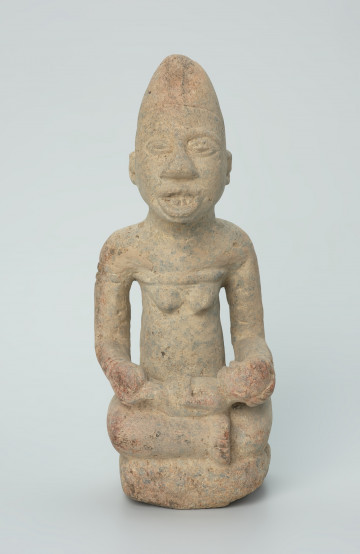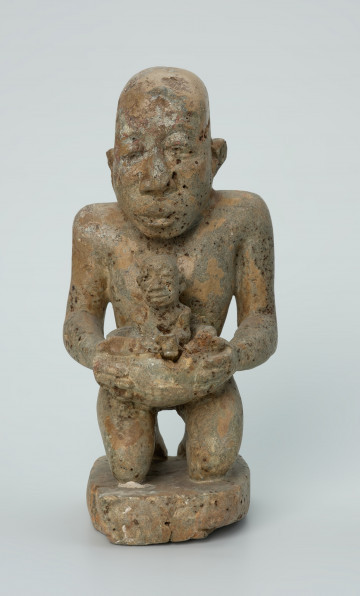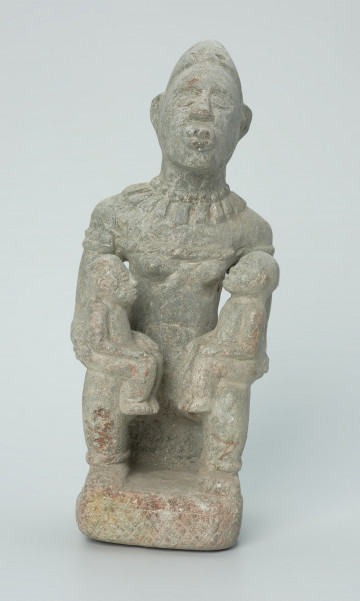
Ancestor worship figure
około 1901 — 2000
National Museum in Szczecin
Part of the collection: Mintadi figurines
The ntadi (plural mintadi) sculpture depicts a woman holding a child. It most likely shows a female leader, called mfu-ma-ankento in the Kikongo language. Mintadi are associated with the tradition and culture of the Kingdom of Congo established in the 14th century in the lower reaches of the Congo River (today's territories of northern Angola, Republic of Congo, western part of the Democratic Republic of Congo). They were placed on household altars and the graves of village chiefs, their mothers and wives.In Bakongo culture, the female headman guards fertility and prevents infertility that threatens the individual or the community. She is the bringer of peace and serenity. She exercises authority over women. She is considered the female version of the mfumu mpu, the local chief who performed religious and judicial functions in the Kingdom of Congo. The chief never acted as a military leader. It was believed that this would disrupt the fertility and peace of the community. The mfumu mpu associated with the ancestral world maintains the link between living descendants and deceased ancestors. The Bakongo believe that ancestors influence the fate of living people and are responsible for fertility. The sculpture in question shows a massive necklace, which indicates the woman's high social position. Representatives of the elite were usually presented in jewellery, which consisted of various types of necklaces, bracelets and bead ornaments. The first ornament of a noble girl in the Kingdom of Congo was the nkwangu, a small, modestly decorated bracelet worn on the leg at ankle level or on the wrist, which was considered a symbol of elegance. Adult women wore heavier jewellery. They wore, for example, dienge dia nsingu - heavy, richly decorated necklaces made of copper, which could weigh up to several kilograms. The engraved linear patterns on them were supposed to symbolise wealth. It has been calculated that a wealthy woman could wear around 10 kilograms of jewellery.
Katarzyna Findlik-Gawron
Author / creator
Dimensions
cały obiekt: height: 36,2 cm, width: 14,4 cm
Object type
sculpture
Creation time / dating
Creation / finding place
Identification number
Location / status

około 1901 — 2000
National Museum in Szczecin

około 1901 — 2000
National Museum in Szczecin

około 1901 — 2000
National Museum in Szczecin
DISCOVER this TOPIC
Museum of King Jan III's Palace at Wilanów
DISCOVER this PATH
Educational path